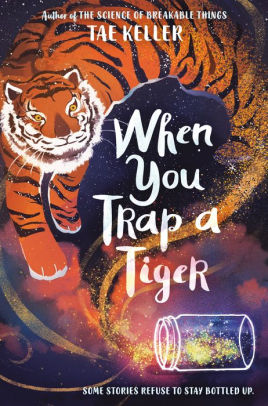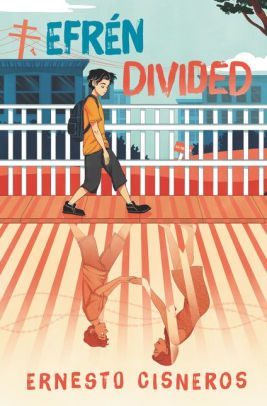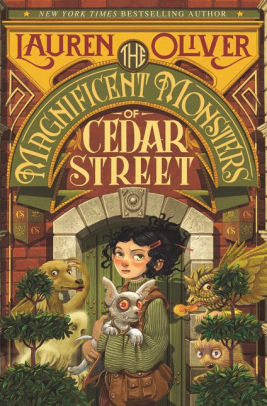Three more possible Newbery contenders we never got around to reviewing.
When You Trap a Tiger by Tae Keller. Random House, 2020, 302 pages

Lily, her older sister Sam, and their mother are moving in with their Halmoni (grandma). Lily is happy about it and Sam is angry, but Sam has been generally miserable since their father’s death some years earlier. And now Halmoni is dying of brain cancer. Shortly after the move, Lily sees a tiger in the rain—a hallucination, or could it be somehow real? As the tiger appears to be stalking her, Lily realizes that Halmoni sees it too. It turns out that the tiger is a keeper—or stealer—of family secrets and stories. Halmoni is trying to keep some these secrets hidden, but the tiger is determined to have them, even if it must trick Lily into turning them over.
Pro: This is a tale about the power of stories to shape community, family, and personal life. Many novels we’ve reviewed, especially recently, have a similar theme, but the introduction of Korean tradition and folktale adds color, texture, and warmth. The love as well as the tensions between generations is well demonstrated in this fine example of magical realism.
Con: The mysticism can be a bit overwhelming—I’m not sure how many middle-graders will identify. While giving due respect to the value of stories, I think that theme can actually get in the way of the plot and appear to be self-justifying. (I like stories better when they’re about something else.) Also, even though Dad was a good guy and Lily’s new friend Ricky is a cool sidekick, the cast is entirely female. It’s not exactly feminist, but feels unbalanced. Near the end, Sam finds a girlfriend and thereby finds herself.
Overall rating: 3 (out of 5)
- See our post on magical realism: “Where Does the Magic Come From?”
Efrén Divided by Ernesto Cisneros. Harper, 2020, 263 pages

Even though Efrén Nava was born in the USA and is thereby a citizen, his parents crossed the border into California illegally. Now they occupy a studio apartment in the barrio, a tight squeeze with the addition of 5-year-old twins Mia and Max. Efrén does well in school and has one anglo best friend, but the specter of deportation is always hanging over the family. Then it strikes, and Efrén must be a nanny to his siblings and an encouragement and help to his father, all while maintaining the fiction in school and the neighborhood that everything’s fine. But will they be able to get Amá back?
Pro: Efrén is both a likeable and relatable character; he struggles with anger and resentment but grows to fit his expanded role. There are no real enemies; the anglos and Latinos at school and home are largely sympathetic. The officials are only doing their job. The hard-working, devout, responsible, Navas would be wonderful additions to America if they could somehow find a path to citizenship, and their story could open up worthwhile discussion about what a just and fair immigration policy might be.
Con: The story doesn’t have the happy ending that middle-school readers might expect. This is of course realistic, but some readers might be disheartened by it. Efrén’s story is a sympathetic and totally relatable take on the immigration problem, but also one-sided. Told from the personal point of view, this story can’t be anything but sympathetic. Still, young readers should be aware that deportation is not solely due to prejudice. Every nation needs some standard of legal entry and citizenship, and the US has been more welcoming than almost any other nation.
Overall Rating: 4
- Other books about the border that we’ve reviewed: Between Us and Abuela (picture book), Beast Rider (middle grades). Her Right Foot is a picture book that addresses the immigration issue generally, though the eyes of the Statue of Liberty.
The Magnificent Monsters of Cedar Street by Lauren Oliver. Harper, 2020, 348 pages

Cordelia Clay and her father live in the alternative 1800s, in a stately old Boston mansion. Mr. Clay’s dwindling veterinary practice conceals the fact that the house is inhabited by monsters. This is because the late Mrs. Clay and her husband were actually monster specialists devoted to defending strange creatures from extermination. Now father and daughter carry on the mission as well as they can. The morning Cordelia wakes up to an empty house, with no father and no monsters, propels her out into the world to find both. She begins her quest with the help of a street boy named Gregory, an undead zombie dog (zuppy), and a handful of clues.
Pro: An entertaining if rather standard adventure unfolds, down to the final revelation and a talky confrontation with the villain. What sets Magnificent Monsters apart (and might make it worthy of Newbery consideration) is fine literary style and a lot of fun with strange creatures. The depiction of the mid-19th-century scientific community is intriguing, as well as the collection of monsters described in the voluminous bestiary that opens the novel.
Con: There’s an evangelical bent towards evolution and the connection of all life. That is, evangelical in the sense of religious: “. . . the fact that life originated at all is a prayer next to impossible,” says one erudite character. “What are the chances it could have happened several times, without reference or connection? It’s one thing to believe the impossible; it’s another to insist upon it. Impossible things turn out to be true all the time. But it’s absurd to take a true thing and insist it become impossible.” Uh . . . okay.
By the way, I don’t see Magnificent Monsters as a very likely Newbery selection, but it’s been on a lot of best-of lists. And some committee members might like a whiff of whimsy, after a particularly grim year.
Overall Rating: 3.5
- Readers with a taste for monsters might enjoy the Will Wilder series, where the monsters have a biblical origin.
We are participants in the Amazon LLC affiliate program; purchases you make through affiliate links like the one below may earn us a commission. Read more here.
Support our writers and help keep Redeemed Reader ad-free by joining the Redeemed Reader Fellowship.
Stay Up to Date!
Get the information you need to make wise choices about books for your children and teens.
Our weekly newsletter includes our latest reviews, related links from around the web, a featured book list, book trivia, and more. We never sell your information. You may unsubscribe at any time.
We'd love to hear from you!
Our comments are now limited to our members (both Silver and Golden Key). Members, you just need to log in with your normal log-in credentials!
Not a member yet? You can join the Silver Key ($2.99/month) for a free 2-week trial. Cancel at any time. Find out more about membership here.
2 Comments
Leave a Comment
You must be logged in to post a comment.


Good afternoon.
Upon reading this post, I came across the cons list for the book when you trap a tiger. I agreed with all the cons listed until i got to the part where it says “the cast is almost entirely female…feels unbalanced.” This con quite perplexed me. It’s a con to have an almost entirely female cast? Where is a review on this site of literally ALL the classics that have MEN as the main characters. And you don’t say it’s unbalanced THEN. Just so you know, 50% of the earth’s population IS women so… maybe 50% of BOOKS should have women in the main roles.
Jesse: Point taken. Thank you for your comment.